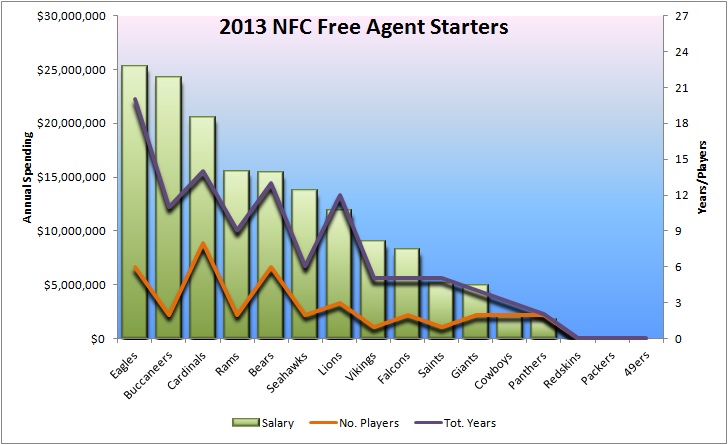[adsenseyu1]
Yesterday I had discussed salary cap space in 2014 and how yesterday marked the start of restructuring and termination season. Today we get our first big move with Larry Fitzgerald announcing that he restructured his contract to provide the Arizona Cardinals with salary cap relief.
My projections for the Cardinals were to have about $1 million in cap room following the earning of escalators and incentives by QB Carson Palmer. Cleary that was not going to be enough for the Cardinals to try to improve further and close the gap between themselves and the Seahawks and 49ers. Restructuring the contract of Fitzgerald, who had an $18 million cap charge and $13 million in cash coming his way, is the easy solution for a quick fix to the teams salary cap situation.
But whenever you hear the word restructure it often means deferring trouble to later in the contract. Renegotiating a contract means a paycut to help the team. Restructuring usually just means conversion of salary into bonus money. While there is no guarantee that is what the Cardinals did, there is a strong possibility that they will just recycle the money into future years, where Fitzgerald already has a $21.25 million cap figure in 2015.
The Cardinals, in a full restructure, can lower his salary in 2014 to just $955,000 and convert the remainder to a signing bonus. If so Fitzgerald’s new contract would look as follows:
Year | Base Salary | Prorated Bonus | Roster Bonus | Workout Bonus | Salary Cap | Dead Money | Savings if Cut |
2014 | $955,000 | $7,409,000 | $0 | $0 | $8,364,000 | $22,045,000 | ($13,681,000) |
2015 | $8,000,000 | $7,409,000 | $8,000,000 | $250,000 | $23,659,000 | $14,636,000 | $9,023,000 |
2016 | $15,000,000 | $2,409,000 | $0 | $250,000 | $17,659,000 | $7,227,000 | $10,432,000 |
2017 | $14,750,000 | $2,409,000 | $0 | $250,000 | $17,409,000 | $4,818,000 | $12,591,000 |
2018 | $14,750,000 | $2,409,000 | $0 | $250,000 | $17,409,000 | $2,409,000 | $15,000,000 |
This would create nearly $10 million in additional cap room but at a major cost moving forward, with incredibly high dead money charges and salary cap charges. This is for a player who has accounted for just 1,752 yards in the last two seasons combined and will be 31 in August. Fitzgerald’s agent has always negotiated an incredible set of contracts, second in the league only to those of Ndamukong Suh in my opinion, and if this is the restructured deal then agent Eugene Parker did it again as a way of nearly ensuring that Fitzgerald earns his 2015 salary.
Hopefully we’ll get the full breakdown tomorrow and see just exactly what the two sides decided to work out.
[adsenseyu4]
[subscribe2]
